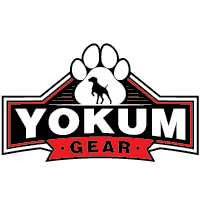Introduction to Advanced Dog Training Techniques
While basic obedience training covers essential commands like sit, stay, and come, advanced dog training techniques delve deeper. These advanced methods aim to fine-tune your dog's behaviors, enhance communication, and foster a stronger bond between you and your pet. Mastering these techniques requires patience, consistency, and a comprehensive understanding of canine behavior.
Understanding Canine Behavior
Before diving into advanced training strategies, it is crucial to understand how dogs think and learn. Dogs are social animals with a pack mentality, and they respond well to clear leadership. They thrive on positive reinforcement, which involves rewarding desired behaviors with treats, praise, or play. This reinforcement encourages them to repeat good behaviors and aids in the learning process.
The Role of Positive Reinforcement
Positive reinforcement is a cornerstone of effective dog training. Rewards such as treats, affection, and verbal praise should be used to motivate your dog. It’s essential to reward immediately after the desired behavior is exhibited to create a clear association. As your dog progresses, you can gradually reduce the frequency of treats while maintaining praise and affection.
Advanced Obedience Training Techniques
Off-Leash Training
Off-leash training provides your dog with a greater sense of freedom while ensuring they remain under control. Start this training in a controlled environment, gradually increasing distractions and distance. Utilize a long, lightweight training lead initially, practicing recall commands and rewarding compliance. When your dog responds reliably, begin practicing in larger, more open areas. Safety is paramount, so this training should not be conducted in busy or dangerous locations.
Distance Commands
Training commands at a distance is another advanced technique. Begin by reinforcing basic commands close to you, progressively increasing the distance between you and your dog. Use a clear, firm voice and accompany verbal commands with hand signals. Consistent practice and rewarding successful responses will aid in perfecting distance commands.
Specialized Training Techniques
Agility Training
Agility training involves navigating an obstacle course, which can include tunnels, jumps, weave poles, and more. This training enhances your dog’s coordination, speed, and confidence. Start with simple obstacles, using treats and praise to guide your dog. As they become more proficient, you can gradually introduce more complex challenges and sequences.
Scent Work and Nose Work
Scent work taps into your dog’s natural ability to detect and differentiate smells. This type of training provides mental stimulation and can be highly enjoyable for your dog. Begin by hiding treats or toys around your home and encouraging your dog to find them. As their skill improves, increase the complexity by hiding items in more challenging locations or using scent containers.
Behavioral Training Techniques
Impulse Control and Focus
Impulse control is crucial for dogs who tend to be overly excited or reactive. Training techniques such as leave it, wait, and settle teach your dog to manage their impulses. Consistently practice these commands in various situations, gradually introducing distractions to improve your dog’s focus and self-control.
Desensitization and Counter-Conditioning
Desensitization and counter-conditioning are effective for addressing fears and anxieties. Gradually expose your dog to the fear-inducing stimulus at a low intensity, rewarding calm behavior. Over time, increase the exposure level, continuing to reward calmness. This technique helps change your dog’s emotional response to the stimulus from fear to neutrality or even positivity.
Conclusion
Mastering advanced dog training techniques enriches the relationship between you and your dog, providing them with mental and physical stimulation, and enhancing their overall quality of life. With patience, consistency, and a keen understanding of your dog’s behavior, you can advance their training and unlock their full potential.

